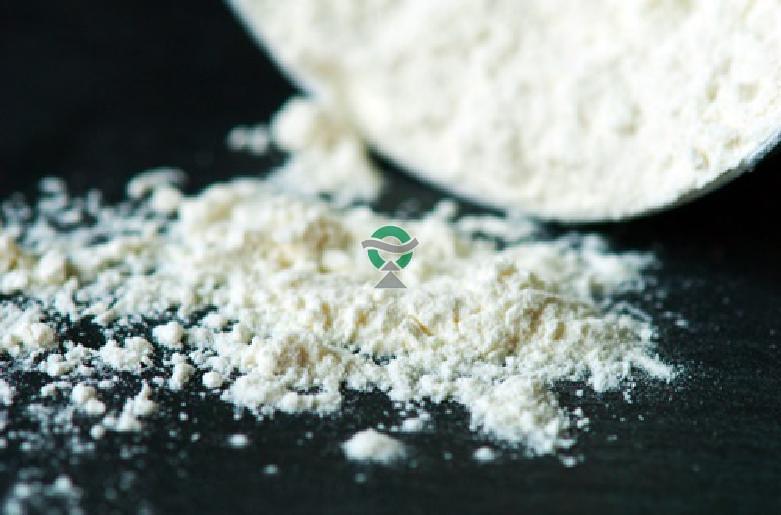Guar gum is an extract of the guar bean, where it acts as a food and water store. The guar bean is principally grown in India and Pakistan, with smaller crops grown in the U.S., Australia, China, and Africa. The drought-resistant guar bean can be eaten as a green bean, fed to cattle, or used in green manure. Our Guar Gum comes in powder form. Guar Gum Powder works as a binder for both industrial as food applications.
Depending upon the requirement of end product, various processing techniques are used. The commercial production of guar gum normally uses roasting, differential attrition, sieving, and polishing.
Food-grade guar gum is manufactured in stages. Guar split selection is important in this process. The split is screened to clean it and then soaked to prehydrate it in a double-cone mixer. The prehydrating stage is very important because it determines the rate of hydration of the final product.
The soaked splits, which have reasonably high moisture content, are passed through a flaker. The flaked guar split is ground and then dried. The powder is screened through rotary screens to deliver the required particle size. Oversize particles are either recycled to main ultra fine or reground in a separate regrind plant, according to the viscosity requirement.
This stage helps to reduce the load at the grinder. The soaked splits are difficult to grind. Direct grinding of those generates more heat in the grinder, which is not desired in the process, as it reduces the hydration of the product. Through the heating, grinding, and polishing process, the husk is separated from the endosperm halves and the refined guar split is obtained. Through the further grinding process, the refined guar split is then treated and converted into powder.
The split manufacturing process yields husk and germ called “guar meal”, widely sold in the international market as cattle feed. It is high in protein and contains oil and albuminoids, about 50% in germ and about 25% in husks. The quality of the food-grade guar gum powder is defined from its particle size, rate of hydration, and microbial content. E412 guar gum is an important natural food supplement with high nutritional value.
Manufacturers define different grades and qualities of guar gum by the particle size, the viscosity generated with a given concentration, and the rate at which that viscosity develops. Coarse-mesh guar gums will typically, but not always, develop viscosity more slowly. They may achieve a reasonably high viscosity, but will take longer to achieve. On the other hand, they will disperse better than fine-mesh, all conditions being equal. A finer mesh, such as a 200 mesh, requires more effort to dissolve.
Modified forms of guar gum are available commercially, including enzyme-modified, cationic and hydropropyl guar.









